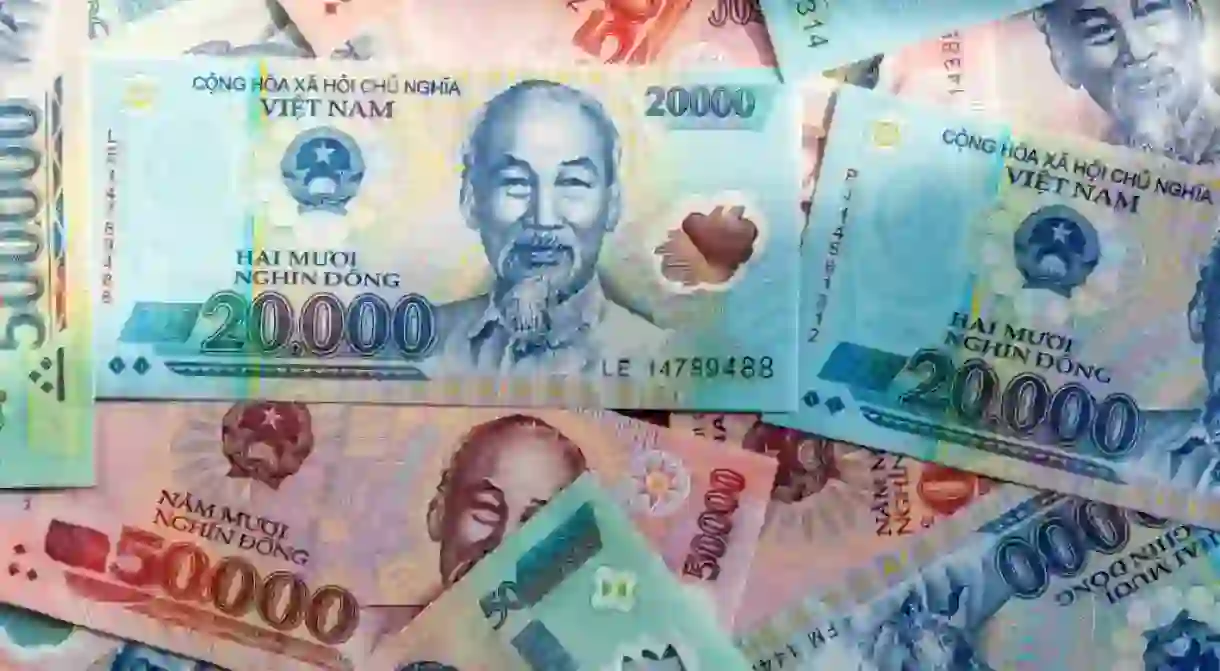Who and What are on Vietnam's Banknotes?

When traveling through Vietnam, getting the hang of the currency can be a bit daunting. Put simply, there are too many 0’s —three too many to be exact. Life would be easier if a 500,000 note was a 500, a 200,000 a 200 and so on. Unfortunately, that’s not the case; however, if you keep an eye on the imagery and color of each note, you should be a step ahead.
Types of Cash
It’s important to remember that there are two distinct types of Vietnamese đồng. The smaller notes, including denominations of 200, 500, 1,000, 2,000 and 5,000 which are no loner printed, yet still widely accepted, are made from cotton. With the exchange rate hovering around 23,000 VND to 1 USD, that means the largest of the cotton cash comes in a hair under a quarter.
The second and most important kind of note is made from a polymer plastic. These are the notes that are currently printed and they exist in denominations of 10,000, 20,000, 50,000, 100,000, 200,000 and 500,000. The largest note is usually equivalent to around 25 USD.

The Front
This is not going to help, sorry. The front side of each and every note from the 200 to the 500,000 is a picture of Vietnam’s beloved Hồ Chí Minh. His face is set to the right side of the bill, while a small Vietnamese star adorns the left, just above the value of the note. On the plastic polymer notes, a clear window sits to the right of Uncle Hồ.

The Back
Thankfully, the back side of each denomination is unique and thus helpful in differentiating otherwise similar bills. Colors are also key to note, and perhaps as helpful, if not more so than the imagery when it comes down to handing over 1 USD or 25 USD. Colors and imagery are as follows:
200 (Orange): A tractor and agricultural scene
500 (Pink): Fishing boats in the port of Haiphong
1,000 (Greenish Brown): Elephants assisting in the farming of timber in Tan Nguyen
2,000 (Brown): The Nam Định Textile Factory
5,000 (Blue): Trị An Hydroelectric Plant
10,000 (Yellow): Offshore oil rig
20,000 (Blue): The Japanese Covered Bridge of Hội An
50,000 (Pink): Ancient temples in the historic city of Huế
100,000 (Green): Hanoi’s Temple of Literature
200,000 (Brownish Red): Iconic Hạ Long Bay
500,000 (Blue): The birthplace of Ho Chi Minh in Kim Liên, Nghệ An Province
Practice
There’s no denying that Vietnamese currency is confusing. Color schemes can be similar, counting 0’s is tough on the eyes, and the exchange rate can feel outlandish. Keeping imagery and color in mind will be helpful, but the best way to ensure you don’t overpay when you travel through Vietnam is to get used to the cash before arriving. Take some time to get accustomed to the look and feel of different notes before you land; it’s the best you can do.














